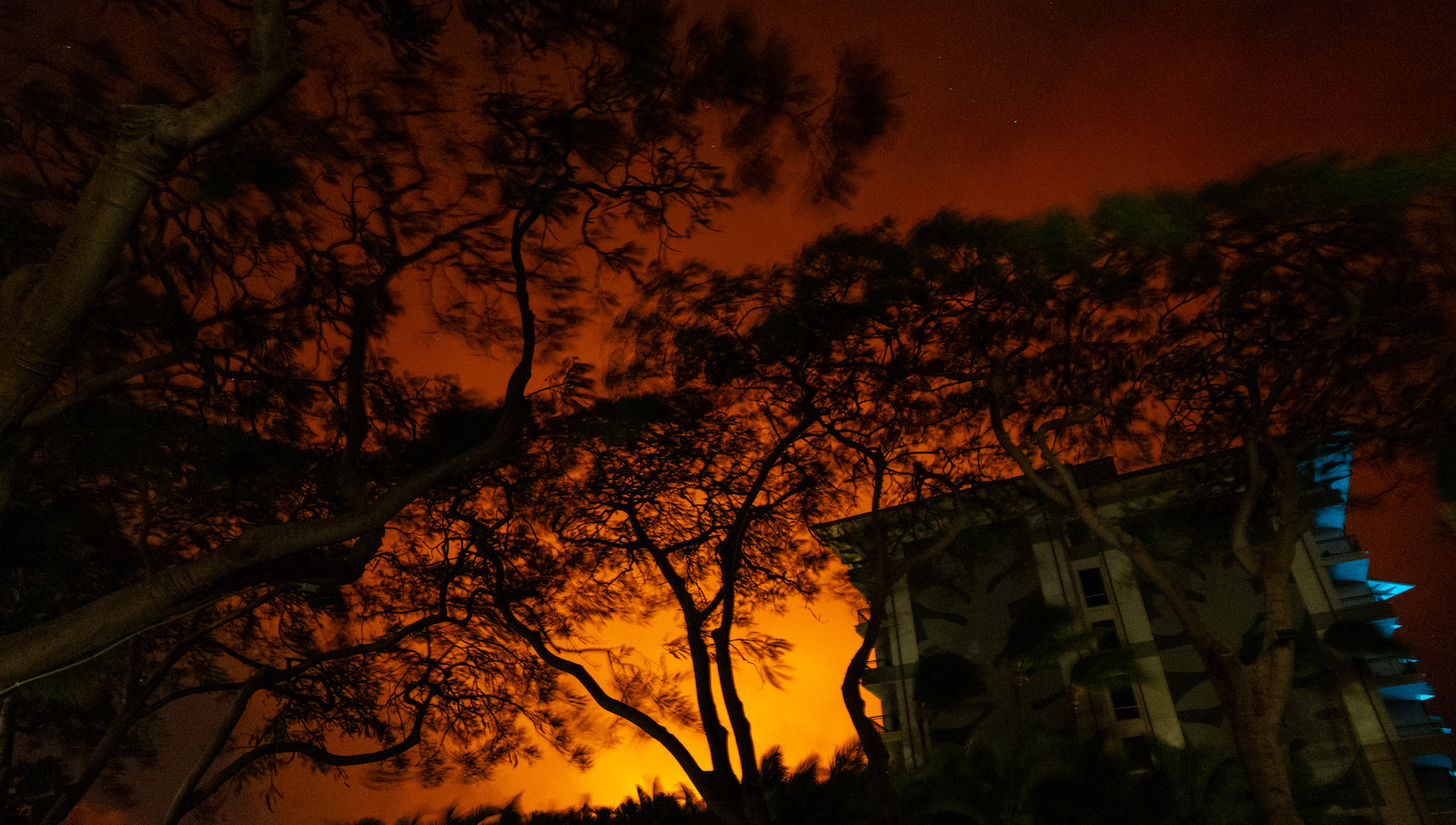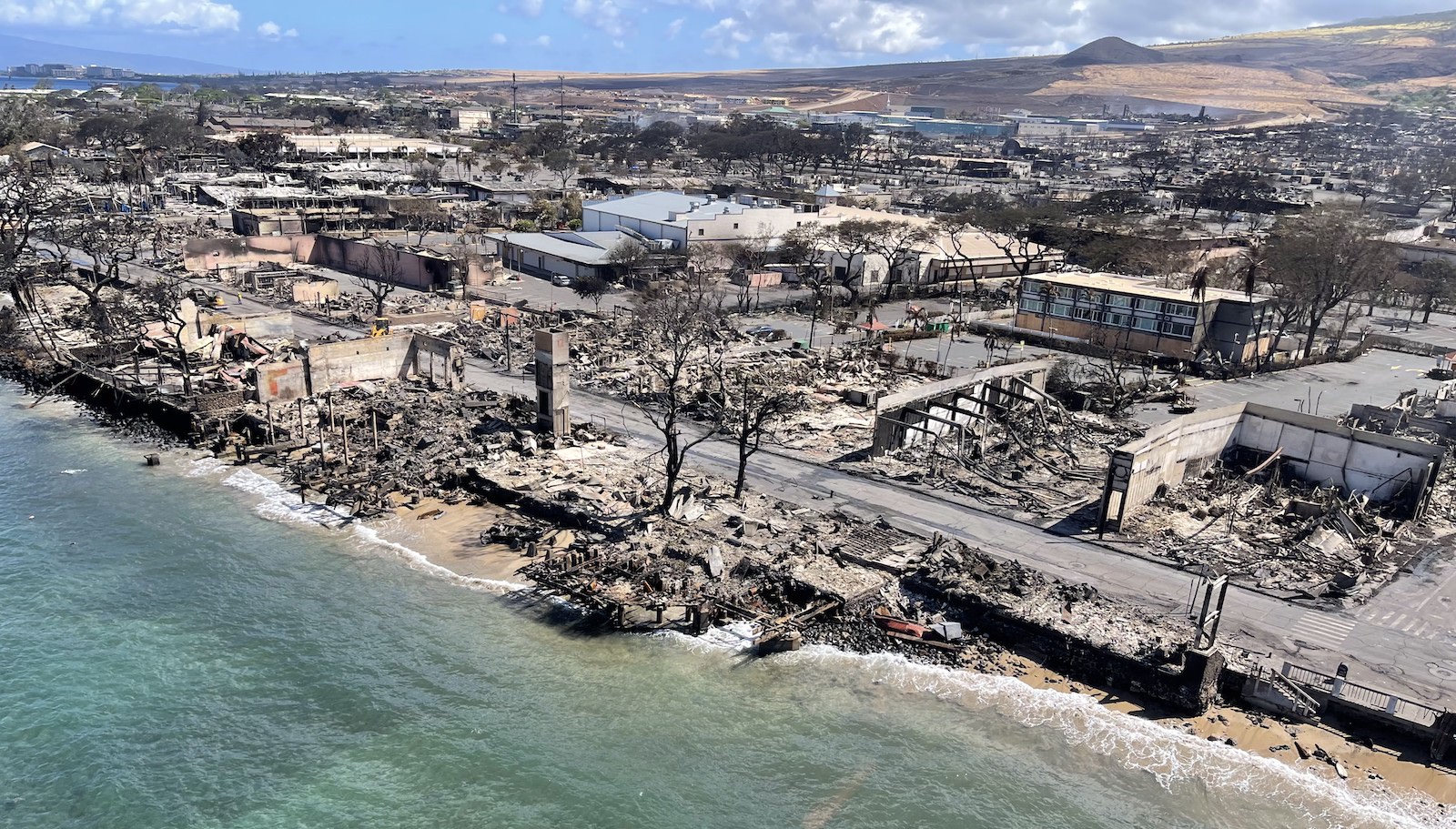
Activists appealed to the United Nations for help to stave off “disaster capitalism” in the wake of the deadly fire.
On the evening of Aug. 8, hours after a wildfire ravaged West Maui, Maui County’s top emergency management official, Herman Andaya, texted his secretary to ask about the status of other fires across the island.
“Still burning,” she replied.
“Wow…lol,” Andaya sent back.
The messages were released in mid-April as part of a new state report the analysis of the government’s response to the fire which ripped by Lahaina killed more than 100 people, making it the deadliest wildfire in modern US history. Documents, text messages and interviews reveal slow, poor communication between government agencies, causing leaders like Andaya hours of delay in realizing the severity and scope of the crisis.
Andaya, who resigned shortly after the wildfire due to widespread criticism for his lack of qualifications and his agency’s decision to sound no sirens as the fire spread was at a training in Honolulu the day it happened. The texts show that hours after the inferno engulfed the town, Andaya did not know if any houses had been lost and thought that only a single business had been razed to the ground. The fire burned more than 2,000 buildings and displaced thousands of people.
For Alyssa Purcell, a Native Hawaiian archivist from Oʻahu, the lack of urgency in top officials’ response to the community’s struggles feels familiar.
“It’s a pattern,” she said. “This is not new. And I think the text messages show that there’s such a desensitization on their part to our needs that there’s nothing else we can do at this point except go to the highest possible platforms and stages that we possibly can.”
Two days before the report came out, Purcell flew to the United Nations headquarters in New York to speak at the UN Permanent Forum on Indigenous Affairs, urging those present to support the self-determination of native Hawaiians like herself.
“The 2023 Lāhainā wildfires exposed a systemic disregard for indigenous rights,” said Purcell, who is a member of the Ka Lahui Hawaiʻi delegation, a group that works to promote Native Hawaiian sovereignty. “Hawaiian families struggle with disaster capitalism, where corporations and developers use the aftermath of the fires to acquire land, develop properties and start projects that are not aligned with the needs of indigenous communities or sustainable practices.”
The wildfire’s unprecedented destruction underscored the stakes of the group’s decades-old appeal for international support for Native Hawaiian self-determination. In her remarks this year, Purcell called on the UN to reinstate Hawaiʻi as a non-self-governing territory. That list includes more than a dozen territories — Guam, French Polynesia and New Caledonia, to name a few — whose people have yet to achieve self-government, either by gaining independence or choosing to join another country to join.
The Hawaiian Islands were removed from the United Nations list of colonies after residents of Hawaii voted to become a state in 1959. But Hawai’i was only given the option of statehood over their previous status as a US territory. Unlike other island nations such as Palau, Vanuatu and Fiji, the indigenous peoples of Hawaiʻi were never given the option of independence after the United States overthrew the Hawaiian monarchy in 1893.
“If you go back to the root of all these seemingly disparate problems, you’ll find very, very quickly that the root of it all is the lack of self-determination,” Purcell said.
Take Lāhainā. In the decades before the overthrow, the coastal community was the capital of the Hawaiian Kingdom. Hawaiian royalty lived on a sandbank in the middle of a vast fishpond off Maui’s leeward coast. But sugarcane owners diverted water from the wetlands to their fields in the 19th century, forcing many locals to abandon subsistence farming of crops such as taro and breadfruit. Finally the fishpond was paved for a parking lot and baseball field, and when last year’s wildfire came, the former wetland was parched and ready to burn.
The new state report on the Lāhainā wildfires found that as tourism and real estate replaced large-scale agriculture as Hawaii’s main economic drivers in recent decades, landowners left large tracts of land fallow and filled with highly flammable invasive grasses.
“The removal of active agriculture and the subsequent accumulation of highly flammable standing dead fuel on unmanaged lands leads to more and larger fires,” the report said.
These devastating wildfires are modern and 99 percent human-caused, the report said.
“Unlike native uses of fire in continental fire-adapted ecosystems—where systemic and frequent burns have been used for millennia as a tool for forest health, regeneration, and swidden agriculture—the intentional use of fire in Hawaii has been largely limited to lowland clearing. agricultural fields, cooking, the burning of waste, and small ceremonial practices,” the report states. “Since Hawaiian forests are less adapted to fire and are often destroyed when burned, the cultural consequences of increasing wildfires in Hawaii are significant.”
Brandi Ahlo, another member of the Ka Lahui Hawaiʻi delegation to the UN who attended the Permanent Forum with Purcell for the first time this year, sees the Lahaina wildfire as the inevitable result of indigenous land dispossession.
“It goes back in history and the loss of water and the fact that we as Kanaka, who live on the land, are not able to manage our own resources,” said Ahlo. “I think bringing awareness to an international arena and forum is very important for people to see and to get the spotlight because if it can happen here in Hawaii, who’s to say it can’t happen anywhere else?”
Extreme weather events such as the wildfire are expected to increase in frequency as climate change accelerates. Hawaii state leaders are still trying to figure out exactly what happened in Lāhainā last year and plan to release two more reports analyzing officials’ decisions and how similar tragedies can be avoided.
The state is also trying to figure out housing options for families who have been left homeless by the disaster reduce the amount of food they give to more than 2,200 displaced families staying in hotels. People whose homes were spared in Lāhainā still can’t drink the water who was infected when the burn melted pipes.
An ongoing concern is the potential for private interests to capitalize on the disaster’s aftermath by seizing more water and land, both highly contested limited resources on Maui long before the fires.
In the days after the fire, the state temporarily suspended water regulations in West Maui, favoring a major local developer who had fought for years with native taro farmers over access to water. On the other side of the island, the state has urged a court to allow corporations to divert more water from East Maui streams. The Land and Natural Resources Board argued that restrictions on water diversion — court-imposed limits following lawsuits from Native Hawaiian taro farmers claim their right to the water – meant there wasn’t enough water to fight fires in Central Maui.
In April, the state Supreme Court issued a ruling saying the state’s arguments are based on no evidence and made in bad faith.
“It appears that the BLNR attempted to take advantage of the most horrific event in the state’s history to advance its interests,” the Hawaiʻi Supreme Court ruling said.
Meanwhile, the community is still reeling emotionally from the grief of the fire’s destruction.
“When I look at the Lāhainā fires, I see cultural destruction, degradation. I see people die. I see their houses – houses they’ve lived in for generations – gone in a minute,” Purcell said. “And when foreigners look at the situation, when business owners look at the situation, they see opportunities.”








